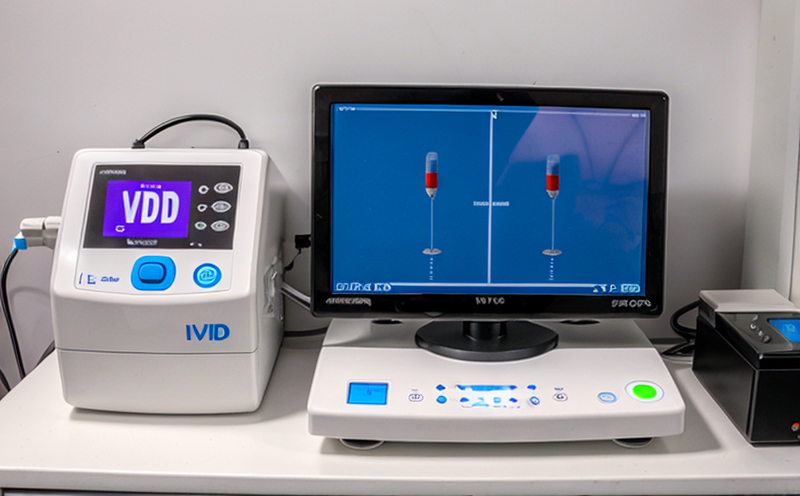IEC 62304 Software Lifecycle Testing for IVD Software
The International Electrotechnical Commission (IEC) Standard IEC 62304 is a widely recognized international standard that defines the software lifecycle process, including design, development, validation, and maintenance of medical devices. This standard ensures that medical device manufacturers adhere to best practices in software engineering, thereby enhancing the safety and reliability of their products.
In Vitro Diagnostic (IVD) devices are critical tools used by healthcare professionals for diagnosing diseases or monitoring patient health through laboratory testing of samples like blood, urine, or tissue. The software component of these devices plays a vital role in ensuring accurate test results. Therefore, compliance with IEC 62304 is essential to ensure the safe and effective performance of IVD software.
Our service for IEC 62304 Software Lifecycle Testing for IVD software focuses on providing comprehensive testing solutions that meet the rigorous requirements set by this standard. Our team of experts ensures that every aspect of your software lifecycle—from initial design through to final maintenance—is thoroughly tested and validated.
The testing process involves several key phases:
- Requirements Analysis: Ensuring all functional and non-functional requirements are clearly defined and understood.
- Design Verification: Verifying that the design specifications meet the intended purpose.
- Code Review: Conducting a detailed review of source code to ensure it adheres to best practices.
- Testing and Validation: Implementing various testing methodologies including unit testing, integration testing, system testing, and acceptance testing to validate the software meets its intended use.
- Risk Management: Identifying risks associated with the software and implementing mitigation strategies where necessary.
- Continuous Monitoring and Maintenance: Ensuring ongoing compliance post-market surveillance and regular updates as required by regulatory bodies.
We employ state-of-the-art tools and methodologies to ensure that our tests are both thorough and efficient. Our approach ensures that your IVD software complies with the stringent requirements of IEC 62304, reducing the risk of non-compliance issues during audits or clinical trials.
Our team works closely with you throughout the testing process, providing regular updates and ensuring all stakeholders are informed about progress. By adhering to this standard, we help our clients achieve faster regulatory approvals while minimizing potential delays associated with non-compliance.
Industry Applications
| Application Area | Description |
|---|---|
| Point-of-Care Devices | Testing software for devices used in hospitals, clinics, and other healthcare facilities where quick diagnostic results are crucial. |
| Laboratory Automation Systems | Evaluating the software responsible for automating various laboratory processes to ensure accuracy and efficiency. |
| Telemedicine Platforms | Assuring that telemedicine applications meet safety standards, particularly important given their increasing reliance on remote diagnostics. |
| Diagnostic Imaging Systems | Verifying the software used in imaging systems to ensure accurate diagnosis and safe operation. |
The application of IEC 62304 goes beyond just compliance; it also enhances product reliability, ensuring that healthcare providers can trust the results produced by these devices. This is especially important given the critical role played by IVD software in modern medical practices.
Our expertise lies in understanding not only the technical aspects of IEC 62304 but also how they apply to real-world scenarios within the context of IVD device testing. By leveraging this knowledge, we provide tailored solutions that address your specific needs and challenges.
International Acceptance and Recognition
- USA: The FDA recognizes IEC standards as a means to demonstrate compliance with the General Controls for Medical Devices under Subpart E of part 820 of title 21 of the Code of Federal Regulations.
- EU: European Union regulations require conformity assessment based on harmonized standards, including those specified in IEC, as a means to achieve CE marking for medical devices.
- Japan: The Japanese Ministry of Health, Labor and Welfare accepts IEC standards as a basis for approval under the Pharmaceuticals and Medical Devices Act (PMDA).
- Australia/New Zealand: The Australian New Zealand Conformity Assessment Board (ANZCERT) recognizes IEC standards for assessing conformity to the Australia New Zealand Joint Harmonization Document (JHD).
The widespread acceptance of IEC standards, including IEC 62304, makes it a cornerstone in global regulatory frameworks. By incorporating these standards into your development processes, you ensure that your products are not only compliant with local regulations but also meet the expectations of international markets.
Our commitment to excellence extends beyond mere compliance; we strive to exceed industry benchmarks by providing thorough and precise testing services. Our clients benefit from our deep understanding of IEC 62304, enabling them to navigate complex regulatory landscapes confidently.
Competitive Advantage and Market Impact
The implementation of IEC 62304 within the framework of your IVD software development process offers several significant advantages:
- Enhanced Product Reliability: By following a structured lifecycle approach, you minimize risks associated with software failures, leading to more reliable products.
- Achieved Regulatory Compliance: Ensuring full compliance with international standards helps avoid costly delays and sanctions during regulatory approval processes.
- Improved Customer Trust: Demonstrating adherence to high-quality standards builds trust among healthcare providers and patients alike.
- Competitive Edge in Global Markets: Compliance with internationally recognized standards enhances your product's appeal to global markets, broadening potential customer bases.
- Reduced Development Costs: Early identification of issues through comprehensive testing reduces the need for expensive post-market corrections or recalls.
In today’s competitive healthcare landscape, maintaining strict adherence to regulatory requirements is not just a necessity—it's a strategic imperative. By integrating IEC 62304 into your development processes, you position yourself at the forefront of innovation and quality assurance.
Our service ensures that every aspect of your software lifecycle adheres strictly to these standards, thereby enhancing product reliability and safety while fostering trust among healthcare professionals and patients alike.





